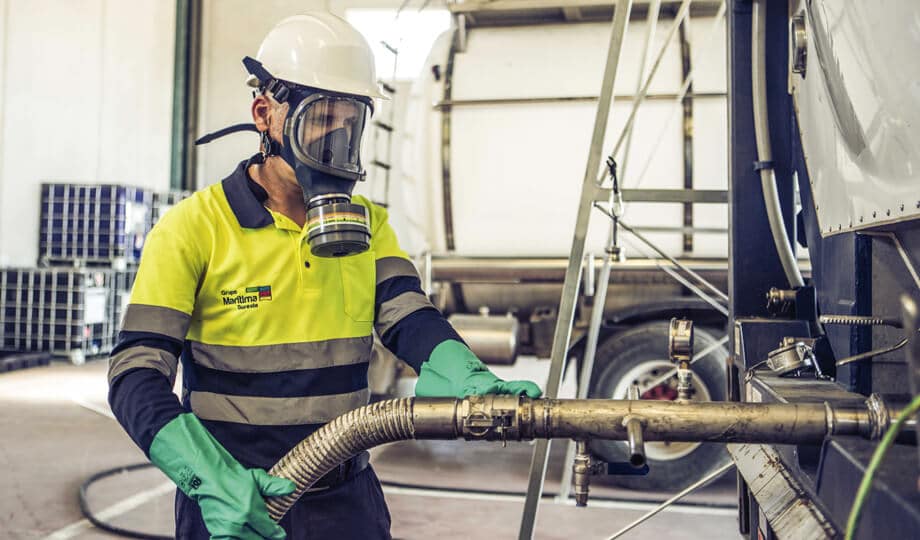A storage space for your dangerous goods and chemical products
A storage space for your dangerous goods
If you regularly work with hazardous raw materials or if any of your products are classified as dangerous goods, you may be interested in having a storage space outside your premises.
This could be due, on the one hand, to the occasional increase in the stock of these goods or the need to have material close to the location of your customers.
Another option you could consider is that, when importing raw materials considered hazardous, you may need to temporarily store this material in another location before using it in your facilities.
Whatever your case is, in Grupo Marítima Sureste we have several storage areas for dangerous goods and chemical products, both in closed and open space, and staff trained in handling this type of materials.
If you wish to tell us about your case, you can talk to one of our agents. Or, if you prefer, you can request a quote for this service.
In the facilities of Grupo Marítima Sureste we provide our customers with two ADR storage areas specifically conditioned to accommodate all types of dangerous goods.
We have the accreditation and APQ01 and APQ10 authorization to accommodate harmful, toxic, flammable and explosive substances, complying with the standards stipulated by the current regulations.
In our facilities you will find:
- Personnel with experience in handling chemical products.
- Air circulation system, avoiding the possible accumulation of gases.
- Elevated platforms with drainage system to avoid the leakage of any spill.
- Electrical and lighting installations suitable for explosive materials.
- Machinery for transshipment and cleaning of chemical product containers.
- Eyewash and toilet units.
- Protective equipment depending on the requirements of each product: aprons, masks, coveralls, specialized goggles, synthetic gloves, among others.
- Identified areas away from general storage areas.
- Fire protection and safety.
Table of contents
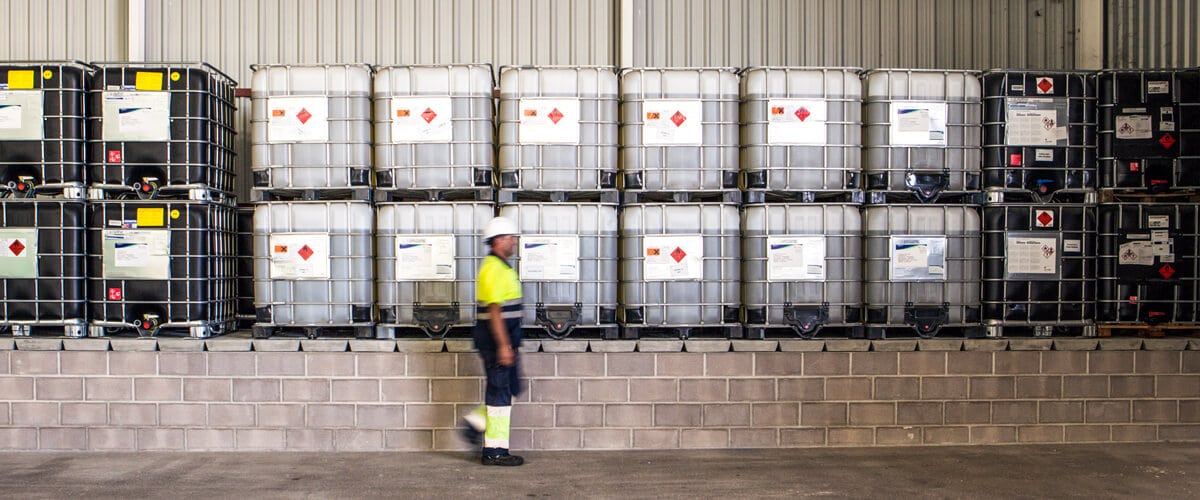
Chemical products warehouse with APQ authorization
In Grupo Marítima Sureste we have different storage areas with APQ-01 and APQ-10 authorization.
Thanks to the authorization ITC MIE APQ-01, in these spaces we can store flammable and combustible liquids.
On the other hand, with the more extensive authorization of the ITC MIE APQ-10, all those mobile containers of all classes are included, regardless of whether they are liquids or solids.
In addition, our warehouses are under constant surveillance 24 hours a day, 7 days a week, and have all the necessary safety measures against fires and accidents resulting from spills of stored substances.
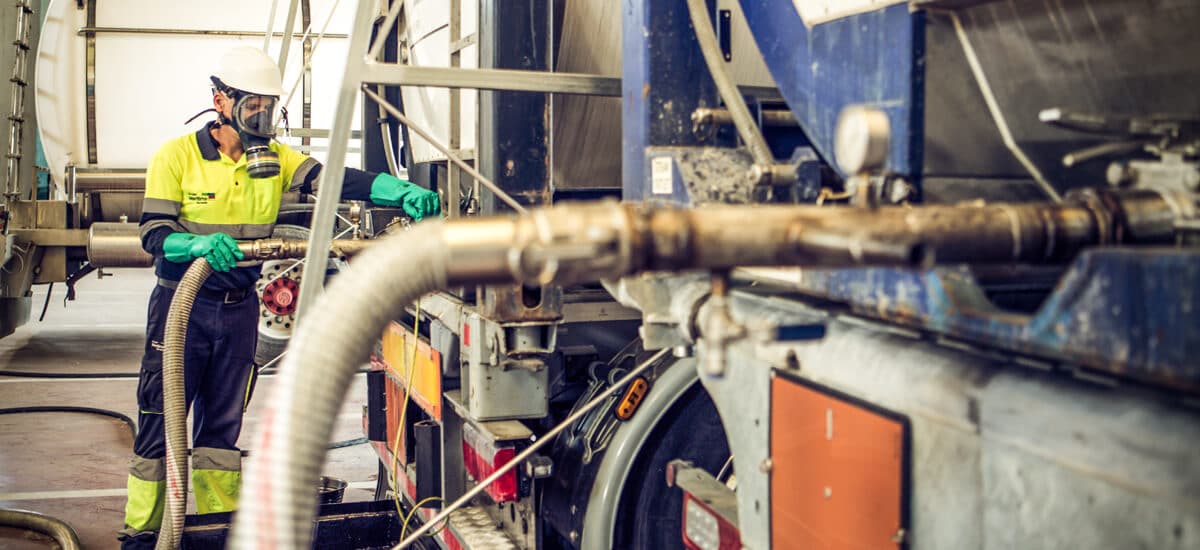
Handling of hazardous materials
Normally, accidents related to dangerous goods occur when handling and transshipment of these materials is being performed.
This type of mishap is usually caused by not taking into account the protection measures and regulations required to perform these tasks correctly or by not carrying them out in accordance with regulatory instructions.
In this environment, the correct handling of loads is essential to guarantee a safe service. It will also be necessary to verify that the goods are correctly packed and labeled, in accordance with ADR and APQ regulations.
In order to properly complete the transport, handling and storage procedures for ADR dangerous goods, these must be carried out under the observation of responsible, trained and experienced personnel related to the handling of dangerous goods, in addition to having the various authorizations to do so.
ADR safety measures
Currently, the regulation that regulates at national level the processes related to the movement of dangerous goods by road is the European ADR Agreement that came into force in January 1968.
This agreement has 17 articles and two annexes, A and B. These two annexes are updated every two years to improve safety measures to ensure the safety of people, goods and the environment.
The information contained in the two final headings, which have recently been updated, explain the safety measures when working with dangerous goods:

First ADR Appendix (A): general provisions
The first annex of the European ADR agreement dictates all actions to be taken to prepare dangerous goods before shipping.
These actions include, among others:
- How to classify the goods.
- Which containers should be chosen for transport and storage.
- How tanks should be filled and used.
- What information must be included in the accompanying documentation.
- How each container should be marked and labeled.
- What controls should be carried out before shipping these materials.
- How these goods must be loaded, unloaded and transported.
Second ADR Appendix (B): transport
This second appendix of the ADR sets out the conditions under which the dangerous goods must be transported:
- How the vehicle transporting this merchandise must circulate.
- Which vehicle to use for its transport.
- What conditions the driver must comply with.
- What equipment must be used during transport.
- What documentation the driver must carry.
If you need space to store goods classified as dangerous goods or chemicals, do not hesitate to request a quote.
In case you need more information or want to consider other possibilities, call us.
Types of dangerous goods
Nowadays there are about 12,000 substances, gases, solids and liquids recognized as dangerous goods.
In order to facilitate their classification, they are divided into 9 groups based on one main characteristic:
Class 1 – Explosives
This group is made up of those substances with the ability to rapidly change the state of their molecules from one state to another, usually from solid to gas, therefore, they can generate a large explosion.
In turn, group 1 is subdivided as follows:
- Mass explosion hazard.
- Risk of projection without mass explosion.
- Risk of fire with blast wave or risk of projection.
- Slight risk of explosion.
- Very slight risk of explosion.
- Extremely insensitive articles.
Class 2 – Gases
This type of goods is currently considered as high hazard cargo because, in order to transport these gases, they must be transported in a container with high pressure in order to reduce their volume.
This pressure can cause great damage in the event that the goods are released or explode.
In this group, in turn, we can classify gases into 3 subgroups:
- Flammable gases.
- Non-flammable and non-toxic gases.
- Toxic gases.
Class 3 – Flammable liquids
This group is mainly composed of elements with a great capacity to burn, such as kerosene or gasoline.
As with the previous two classes, these liquids are categorized into subgroups:
- Flammable liquids without subsidiary hazard.
- Toxic flammable liquids and pesticides
- Flammable corrosive liquids
- Flammable toxic and corrosive liquids
- Flammable explosive desensitized liquids
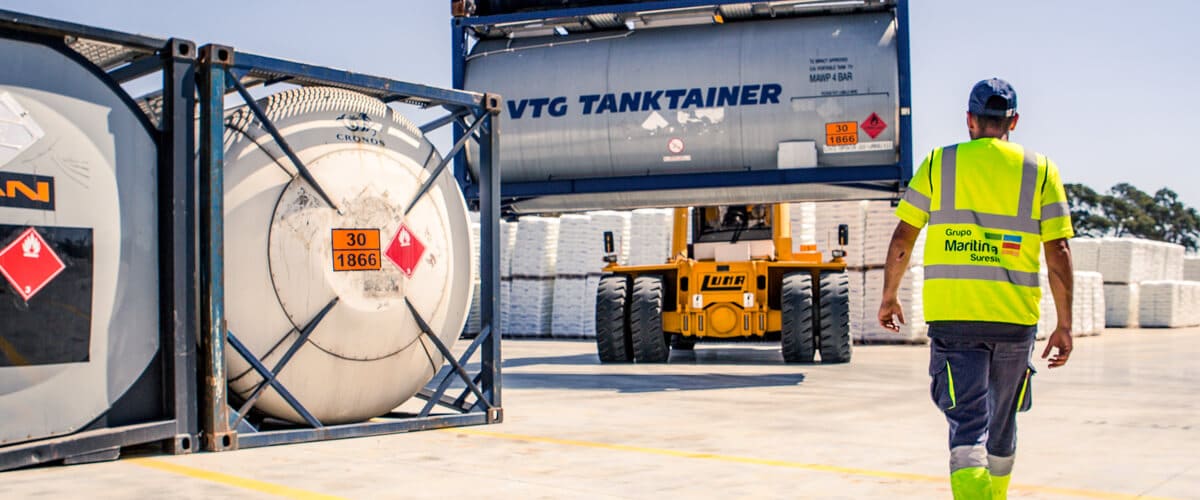
Class 4 – Flammable solids
In this group we find those solid substances that, when in contact with water, release flammable gases. We also find explosive goods and self-reactive goods.
Based on this, we classify them in 3 subclasses:
- Flammable, self-reactive and desensitized explosive substances.
- Substances that can spontaneously combust.
- Solids which in contact with water give off flammable gases.
Class 5 – Oxidizing agents and organic peroxides
Class 5 consists of materials with a high oxygen content that can react with other dangerous goods such as flammable or combustible liquids and generate a combustion that is difficult to extinguish.
It is important to know this, since this type of goods should not be moved or stored together with other explosive or flammable elements.
Class 5 is divided into two groups:
- Oxidizing substances
- Organic peroxides
Class 6 – Toxic and infectious substances
In this case, Class 6 is made up of poisonous substances and chemical materials that are seriously harmful to the well-being of people and the environment.
In this class we also find those goods coming from scientific studies that have pathogenic agents, viruses that cause diseases and infections.
Class 6 has the following division:
- Toxic substances, such as chemical poisons.
- Substances dangerous because of their pathogen content.
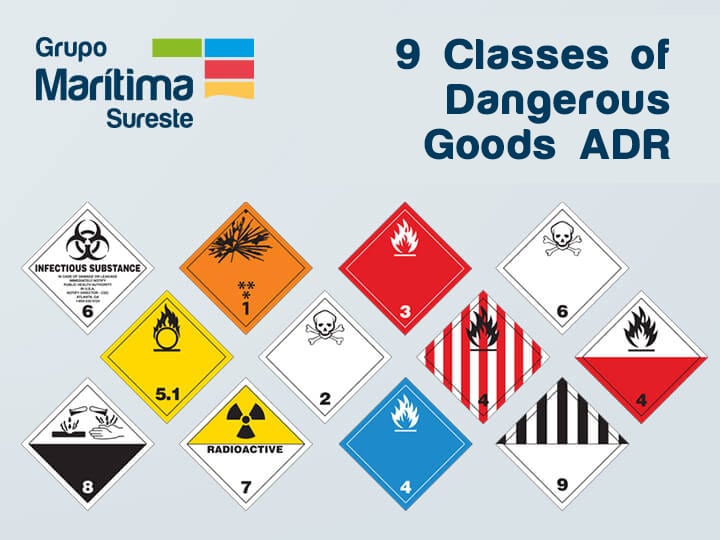
Class 7 – Radioactive
This class consists of substances containing unstable atoms and a changing molecular structure. Within this class we find products such as enriched Uranium, Plutonium or Thorium.
Class 8 – Corrosives
This group is formed by all those chemical products with a high content of alkaline or acid components. They are substances that pose a danger because, in contact with other materials or the skin, they can cause immediate damage.
Class 9 – Miscellaneous dangerous goods
This last class includes those dangerous goods that pose a risk during transportation and storage, but have not been classified in any of the previous groups.
Dangerous Goods Storage and Handling Services
If you usually work with dangerous goods and need storage space outside your facilities, call us or request more information through our online form.
